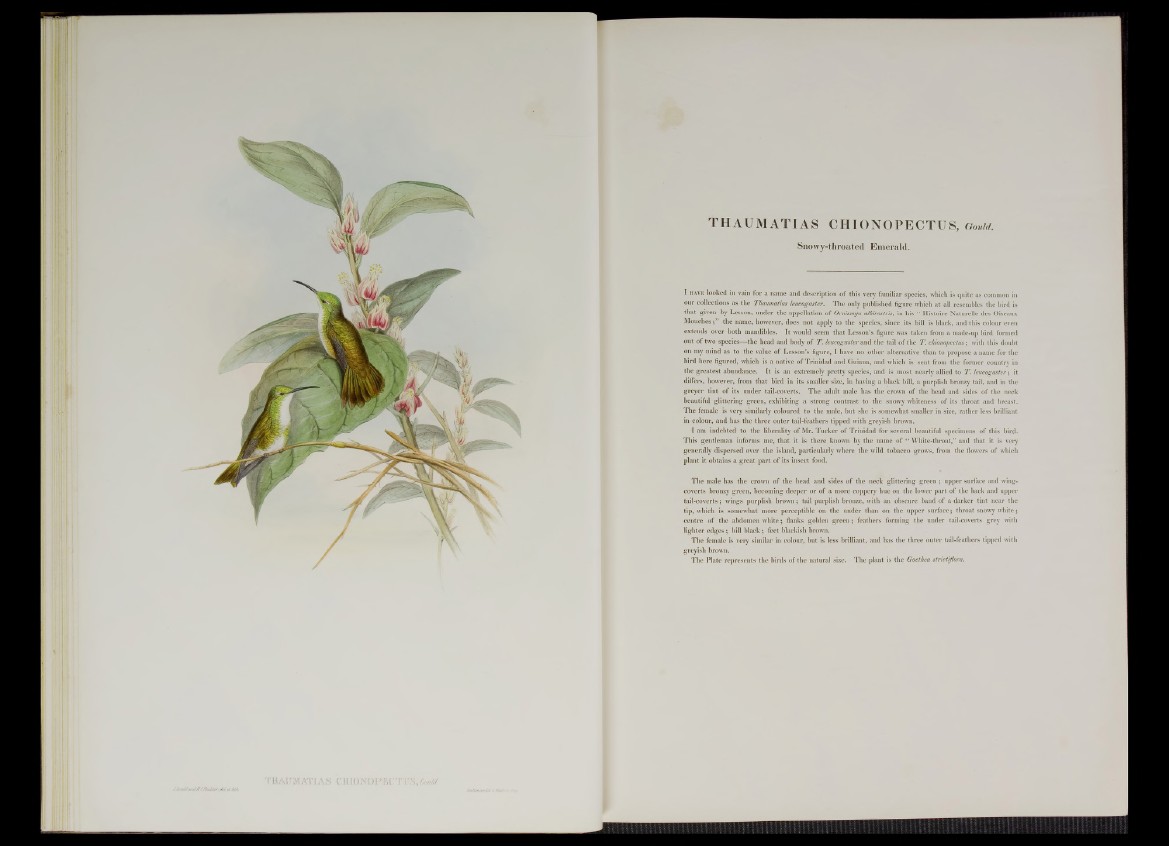
'HAIJMATTAS CHI
THAUMATIAS CHIONOPECTUS, Gould.
Snowy-throated Emerald.
I h a v e looked in vain for a name and description of this very familiar species, which is quite as common in
our collections as the Thaumatias leucogaster. The only published figure which at all resembles the bird is
that given by Lesson, under the appellation of Ornismya albirostris, in his “ Histoire Naturelle des Oiseaux
Mouches;” the name, however, does not apply to the species, since its bill is black, and this colour even
extends over both mandibles. It would seem that Lesson’s figure was taken from a made-up bird formed
out of two species—the head and body of T. leucogaster and the tail of the T. chionopectus; with this doubt
on my mind as to the value of Lesson’s figure, I have no other alternative than to propose a name for the
bird here figured, which is a native of Trinidad and Guiana, and which is sent from the former country in
the greatest abundance. It is an extremely pretty species, and is most nearly allied to T. leucogaster; it
differs, however, from that bird in its smaller size, in having a black bill, a purplish bronzy tail, and in the
greyer tint of its under tail-coverts. The adult male has the crown of the head and sides of the neck
beautiful glittering green, exhibiting a strong contrast to the snowy whiteness of its throat and breast.
The female is very similarly coloured to the male, but she is somewhat smaller in size, rather less brilliant
in colour, and has the three outer tail-feathers tipped with greyish brown.
I am indebted to the liberality of Mr. Tucker of Trinidad for several beautiful specimens of this bird.
This geutleman informs me, that it is there known by the name of “ White-throat,” and that it is very
generally dispersed over the island, particularly where the wild tobacco grows, from the flowers of which
plant it obtains a great part of its insect food.
The male has the crown of the head and sides of the neck glittering green ; upper surface and wing-
coverts bronzy green, becoming deeper or of a more coppery hue on the lower part of the back and upper
tail-coverts; wings purplish brown; tail purplish bronze, with an obscure band of a darker tint near the
tip, which is somewhat more perceptible on the under than on the upper surface; throat snowy white;
centre of the abdomen white; flanks golden green; feathers forming the under tail-coverts grey with
lighter edges; bill black; feet blackish brown.
The female is very similar in colour, but is less brilliant, and has the three outer tail-feathers tipped with
greyish brown.
The Plate represents the birds of the natural size. The plant is the Goethea strictiflora.